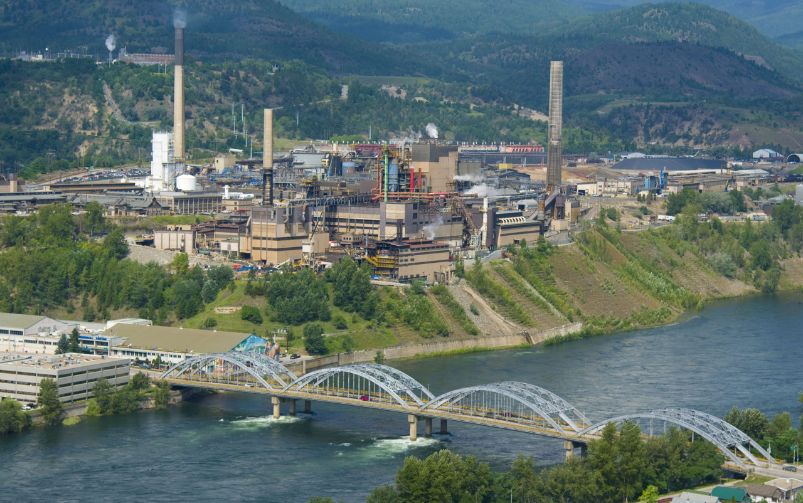This week, British Columbia approved an expansion of the Mount Polley copper-gold mine, potentially extending operations through to 2033. Courtesy of Imperial Metals.
Welcome back to your weekly mining news recap, where we catch you up on some of the news you may have missed. This week’s headlines include Quebec walking away from the Northvolt battery project, the opening of Canada’s Major Projects Office, and gold and silver reaching new highs.
Equinox Gold’s Valentine mine in Newfoundland and Labrador has begun processing ore and is expected to pour its first gold within a month. Once fully operational, it is expected to be Atlantic Canada’s largest gold mine, producing 175,000 to 200,000 ounces annually for the first 12 years. Acquired through its June merger with Calibre Mining, Valentine is Equinox’s second major Canadian operation, along with the Greenstone mine in Ontario, which is also ramping up towards full capacity.
British Columbia has approved a proposed expansion at the Mount Polley mine, which would extend operations until 2033. The plan includes pit deepening, larger waste areas and continued treated water discharge into Quesnel Lake. Xatśūll First Nation is contesting the expansion approval process, and is arguing the environmental assessment and First Nations’ consultation were inadequate.
Teck Resources is pausing major growth projects until its Quebrada Blanca (QB) copper mine in Chile achieves steady production, delayed by tailings management issues. The company launched a review in August to improve operations, which is expected to be completed by October, with updated guidance to be released along with third-quarter results.
Quebec has abandoned the $7 billion Northvolt battery plant project, planned 30 kilometres east of Montreal, following the bankruptcy of its Swedish parent company in March, CBC News reported. Quebec’s economy minister Christine Fréchette confirmed no further funds will be invested, with the province seeking to recover a $240 million loan while losing a $270 million equity stake in the project.
The federal government has launched the Major Projects Office (MPO) to accelerate nation-building projects by streamlining approvals and financing, Canadian Mining Journal reported. Under the leadership of CEO Dawn Farrell, former head of Trans Mountain and TransAlta, the MPO, based in Calgary, will adopt a "one project, one review" approach and work closely with Indigenous communities through an advisory council.
This week, spot silver jumped above US$40 an ounce for the first time since 2011, Mining.com reported. Spot gold also hit a new all-time high of US$3,530 an ounce, surpassing its previous high of US$3,500 in April.
ICMM has launched the Global Mining Dataset, a comprehensive public record of 15,188 mining and processing facilities worldwide. The dataset helps fill long-standing data gaps, giving policymakers, industry and communities better tools to make informed choices and support sustainable development. Covering 47 commodities, it highlights the uneven global distribution of mining and metals, with China, Australia and the United States hosting around 45 per cent of all sites.
Last week, NexGold Mining announced that it had secured industrial approval from Nova Scotia for its Goldboro gold project and is now preparing for construction in 2026, Canadian Mining Journal reported. The mine is expected to produce around 100,000 ounces of gold per year over a 10.9-year lifespan. The project underwent seven years of consultations with regulators and local communities. It secured its environmental assessment approval in June 2022.
The 50-member MARIOS consortium, launched by InnoTech Alberta, unites oil sands producers, suppliers and global research partners to improve equipment reliability and longevity, Tijana Mitrovic reported for the August issue of CIM Magazine. Oil sands mining equipment faces extreme wear from abrasive sand and harsh winters, costing the sector about $10 billion annually. The consortium develops and commercializes solutions such as advanced wear-resistant materials and it is a model that can be expanded to other mining sectors.
That’s all for this week. If you’ve got feedback, you can always reach us at editor@cim.org. If you’ve got something to add, why not join the conversation on our Facebook, Twitter, LinkedIn or Instagram pages?




